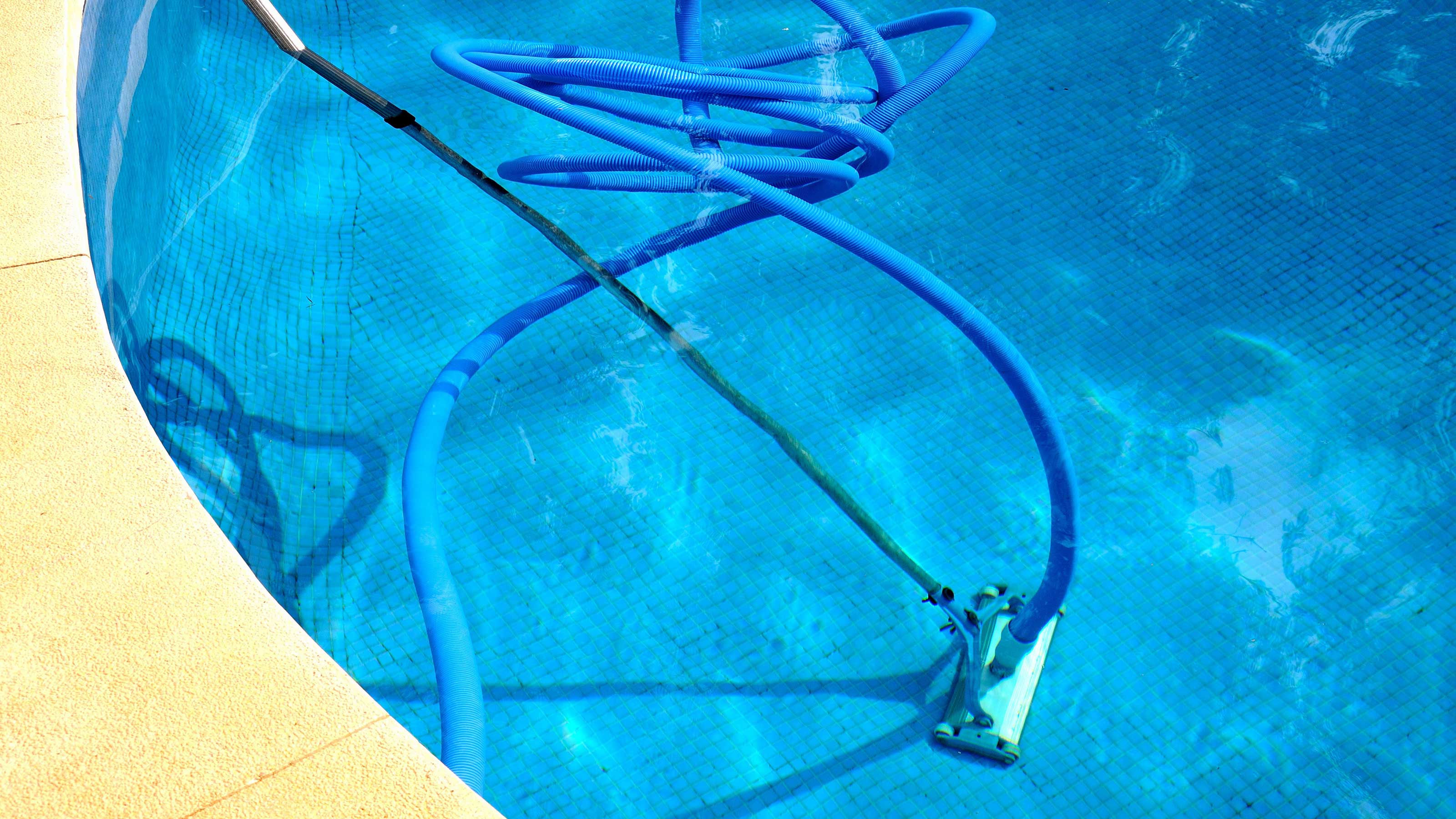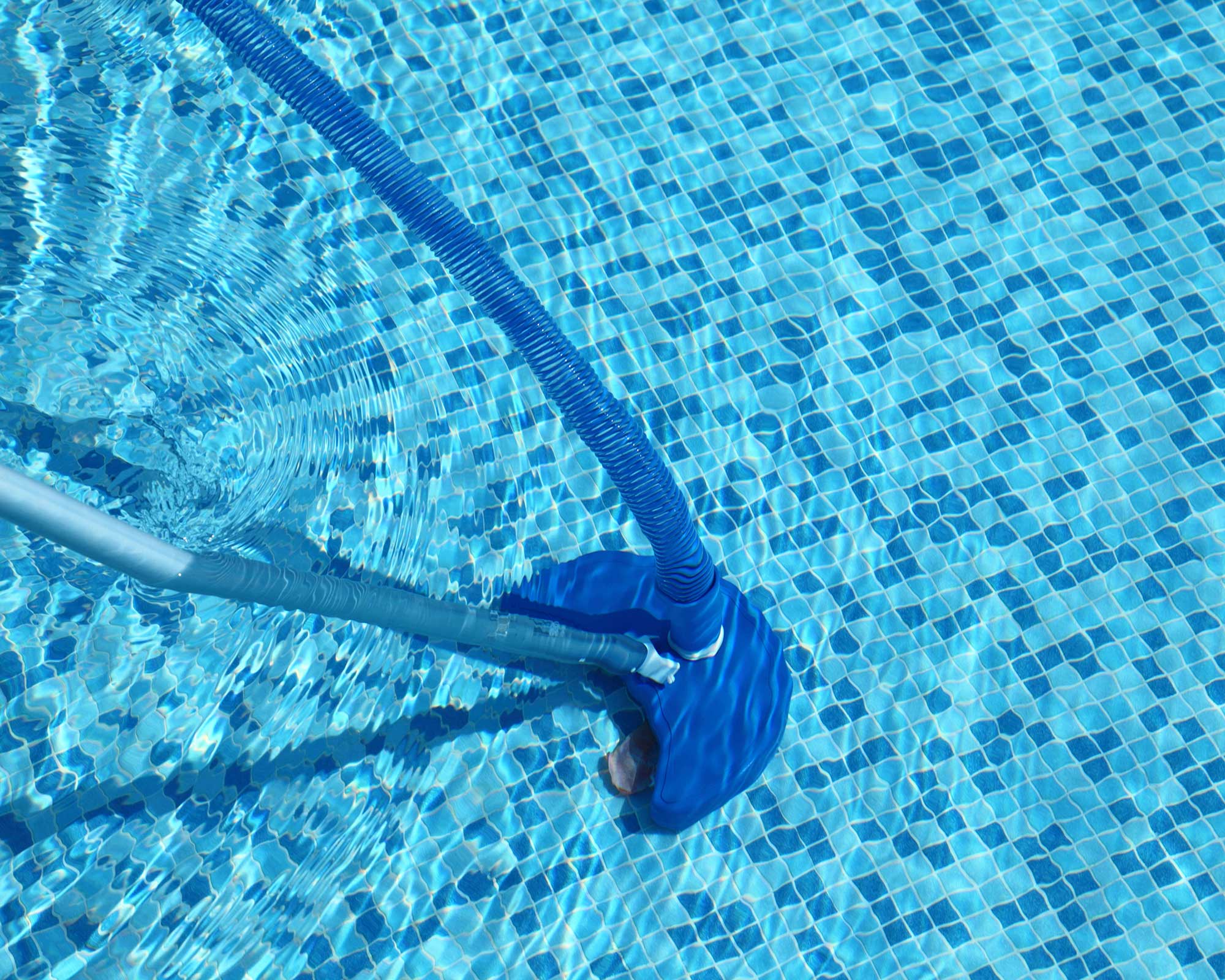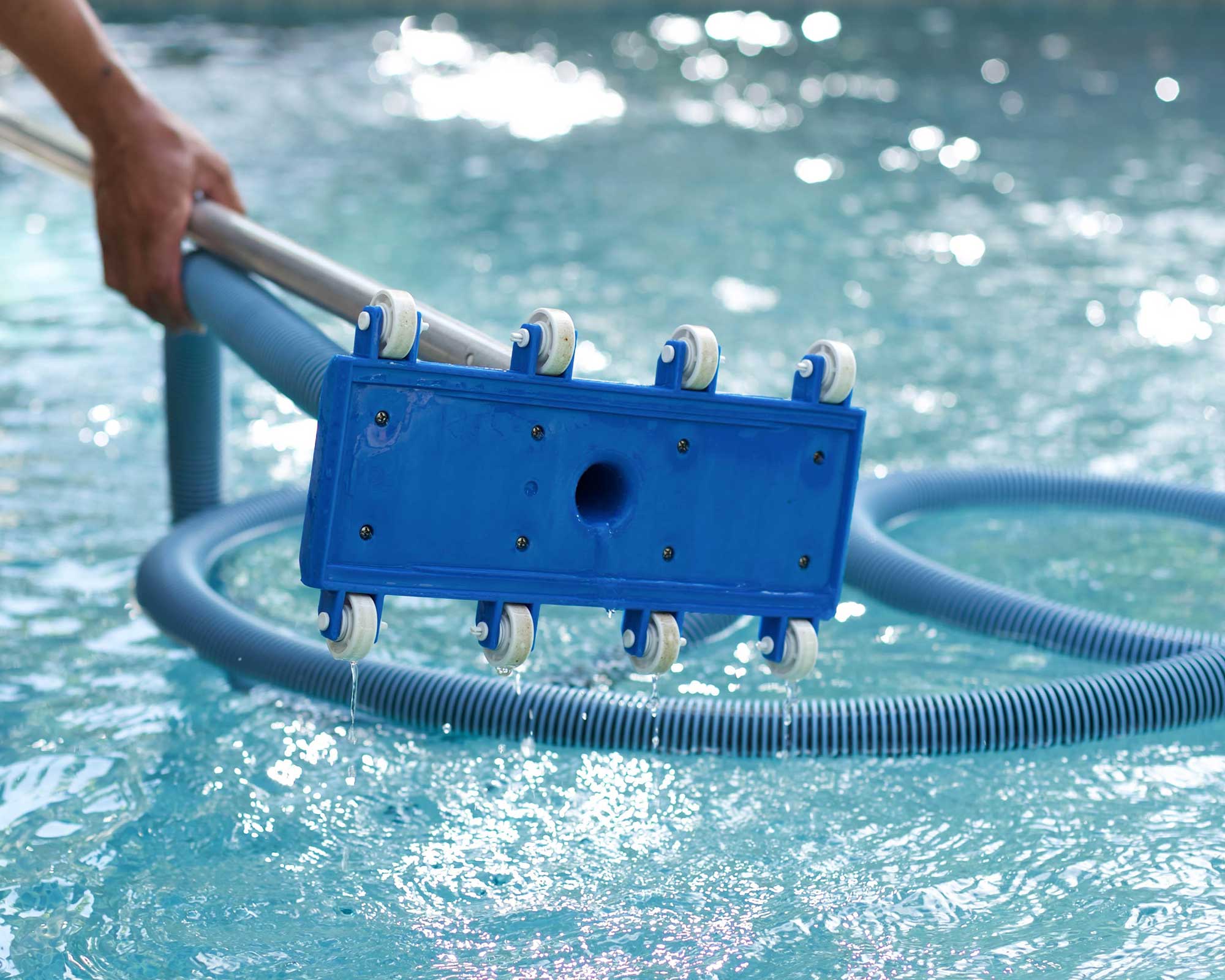How to vacuum a pool: simple steps for cleaning success
Find out how to vacuum a pool and you can clear up fallen leaves and other debris easily – our guide explains


Knowing how to vacuum a pool is crucial for keeping these backyard features in top condition. It's a key part of their maintenance regime and makes a huge difference to the cleanliness of the water. And as everyone knows, a clear, sparkling pool free of debris is much more tempting on a hot summer's day than a murky, dirty one.
So, if you've recently installed or inherited a pool, investing in one of the best pool vacuums and reading through these tips on how to use it properly should be high on your list. It's easier than you might think.

How to vacuum a pool in 5 easy steps
Follow these steps and you'll know how to use a pool vacuum properly on your backyard pool.
- Assemble your pool vacuum. This will consist of attaching the vacuum head to a telescopic pole so you can reach the bottom of your pool easily. The experts at Swimmingpool.com advise using a vacuum head with a soft brush for vinyl liners to avoid causing damage, while one with wheels is good for concrete or gunite pools as they will make it easier to move around. You will then need to attach one end of your vacuum hose to the vacuum head.
- Flush out the air from the vacuum hose. Submerge the vacuum head and hold the other end of the vacuum hose against the return jet of your pool. This will push water through the hose and flush out any air that might be in there, explains Swim University. You will see bubbles coming out of the vacuum head – when these stop, all the air should be out of the hose. Then, attach the end of the hose to your skimmer using the skimmer plate. If you don't have a skimmer plate, remove the skimmer basket before attaching the hose.
- Select the right setting for the job. If your pool has a multiport valve filter, the 'filter' setting will be fine for a regular, routine clean. If you are tackling a dirtier pool, switch it to 'waste' – this will send the water down the drain as you vacuum. With the latter, you will need to top up the water levels of your pool with a garden hose as you go.
- Vacuum up the debris. Now it's time to get cleaning. Using the pole, slowly move the head of the vacuum up and down the bottom of your pool, just like how you'd vacuum a carpet indoors. Swim University advises keeping an eye on your pool filter's pressure gauge while you clean – if it runs 10lbs over normal, stop and backwash it.
- Clear it away and clean the filter. After your pool is clean again, you can disassemble your vacuum, drain the hose, then rinse, dry, and store the equipment away safely. Give your filters a quick clean if you used the 'filter' setting, and remove any debris from the pump strainer basket if needed. Switch the pool filter setting back to 'filter' if you switched it to 'waste' while you vacuumed. Finish up by testing the levels of your pool and balancing the chemicals accordingly.

Remember that vacuuming is only part of the pool maintenance required. There are other steps involved, such as using pool shock and brushing the walls.
'Even if you have the time and energy to look after the pool yourself, consider having it checked over at least once a year by a professional,' The Swimming Pool & Allied Trade Association (SPATA) advises. 'After all, pools are their business, and they will see things that you may well have missed, forgotten, or were simply unaware of, so trust the professionals.
'With outdoor pools, the beginning of the season is a good time to ensure that you do not miss swimming time.'

How often should you vacuum a pool?
Once you know how to use a pool vacuum, you can work it into your regular pool cleaning routine. Once a week is ideal. However, if you notice debris mounting up at the bottom of your pool – often the case after a storm or a pool party – you can do it more frequently.

The garden was always a big part of Holly's life growing up, as was the surrounding New Forest where she lived. Her appreciation for the great outdoors has only grown since then. She's been an allotment keeper, a professional gardener, and a botanical illustrator – plants are her passion.
